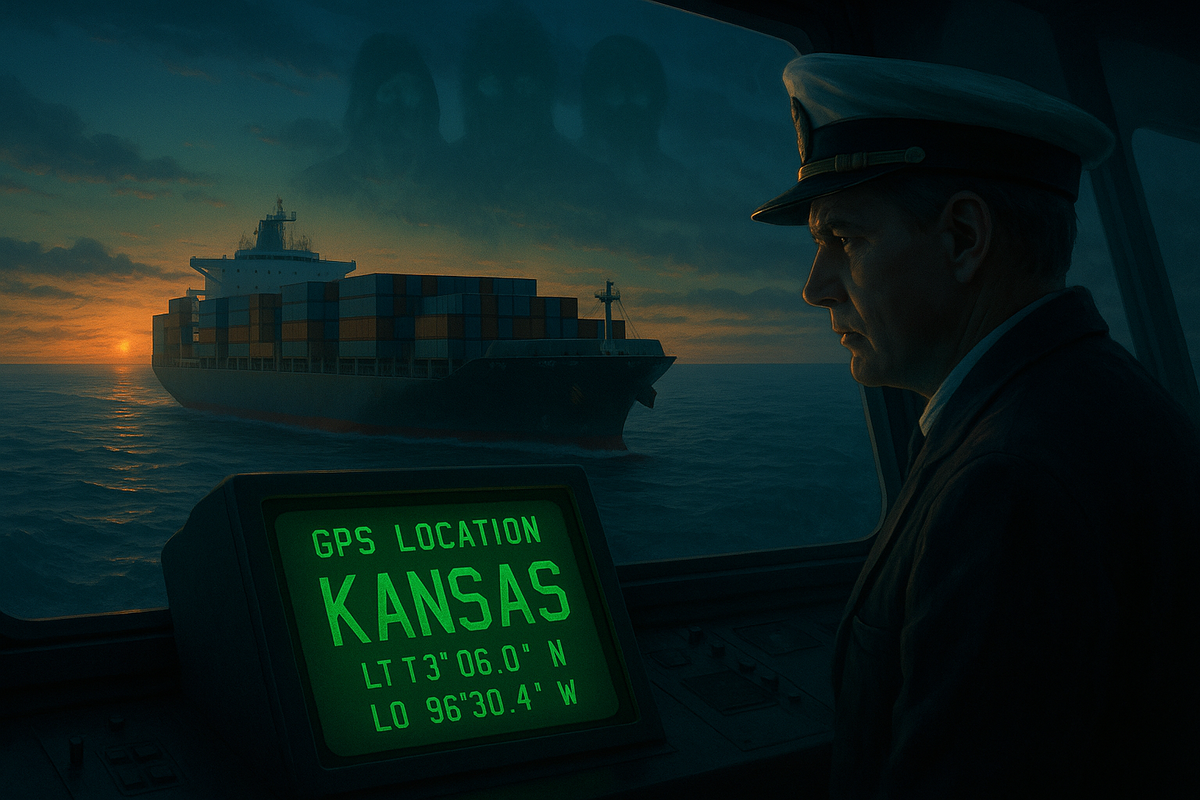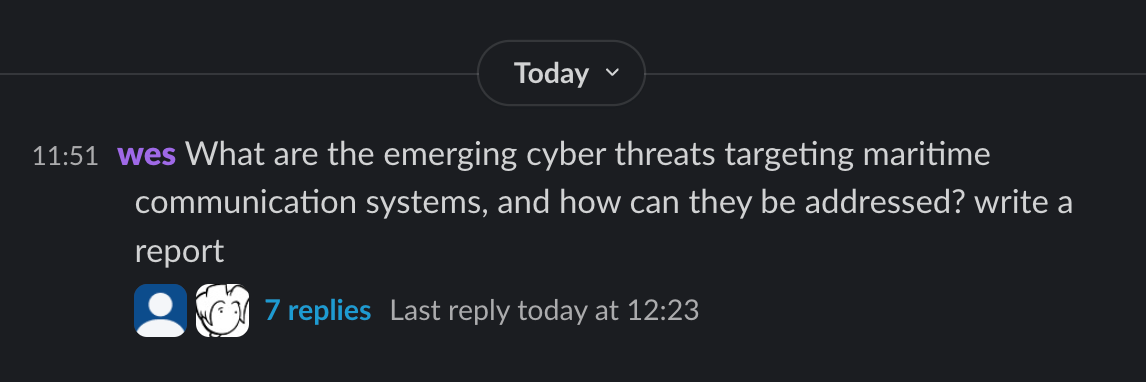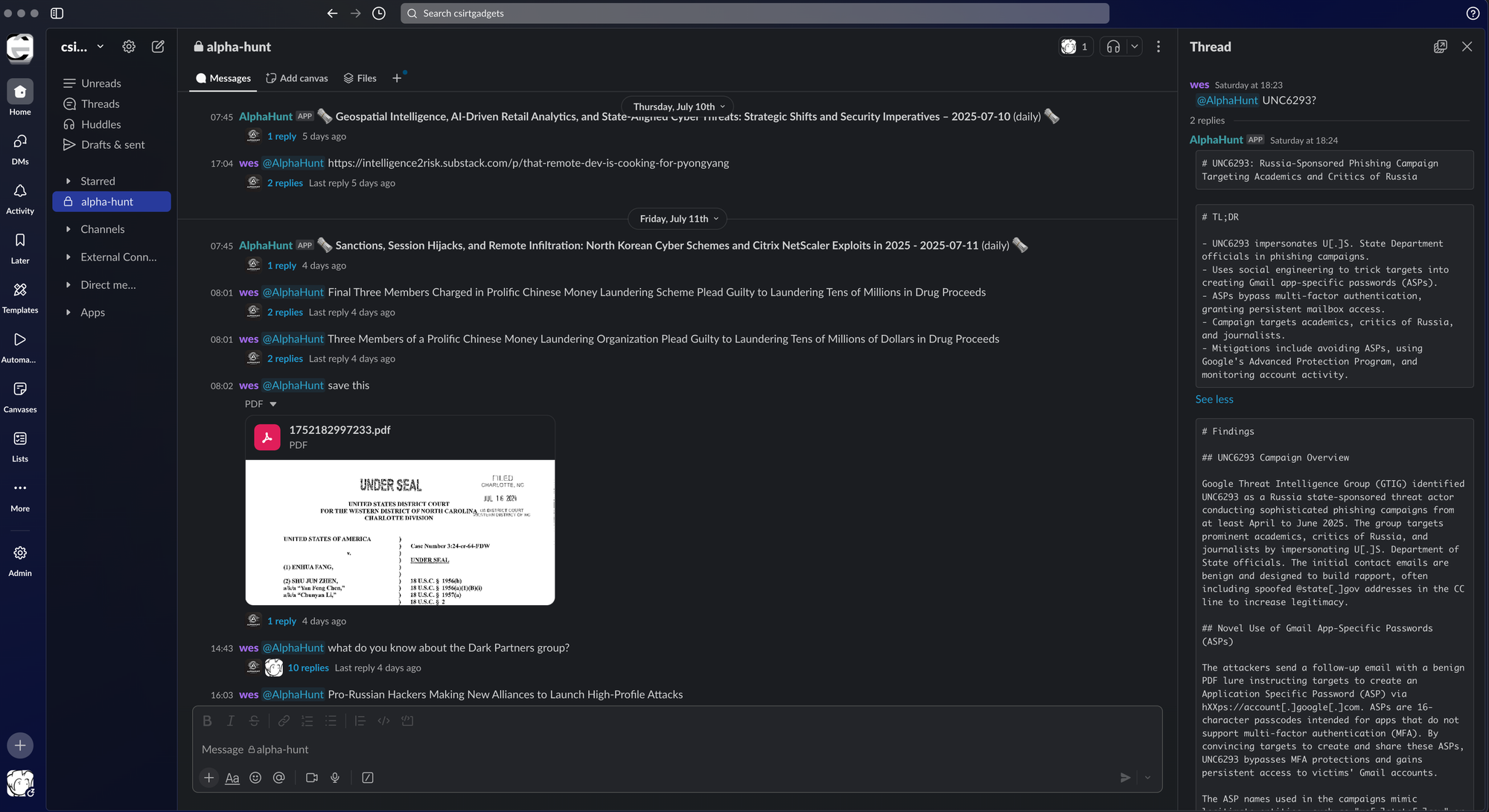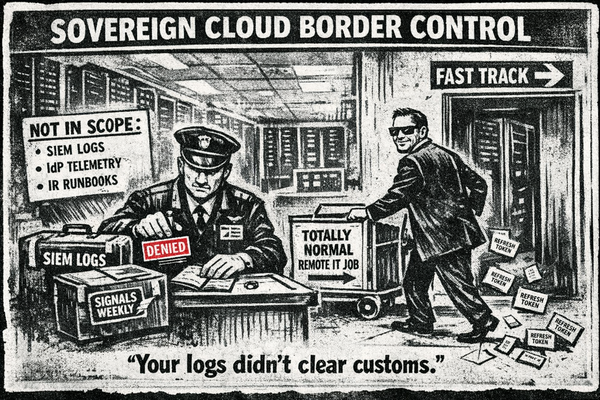Hybrid Threats at Sea: Ransomware, GPS Spoofing, and State-Linked Attacks Escalate Against Maritime Communications
Hybrid attacks are hitting navigation and port systems harder than ever — from ransomware to GPS spoofing — threatening safety, operations, and global trade.

(Have feedback? Did something resonate with you? Did something annoy you? Just hit reply! :))
Do you know how shipping works?
What are the emerging cyber threats targeting maritime communication systems, and how can they be addressed? write a report
Does it take a chunks out of your day? Would you like help with the research?
This baseline report was thoughtfully researched and took 15 minutes.. It's meant to be a rough draft for you to enhance with the unique insights that make you an invaluable analyst.
We just did the initial grunt work..
Are you ready to level up your skillset? Get Started Here!
Did this help you? Forward it to a friend!

TL;DR
-
Harden comms & navigation: Ransomware, GPS/AIS spoofing, and supply chain breaches are rising — driven by state-linked APTs and cybercriminals.
-
Close compliance gaps: USCG, IMO, EU NIS2 rules are tightening, but smaller operators lag in audits, training, and incident reporting.
-
Prepare for hybrid attacks: Expect APT41, APT28, and Crimson Sandstorm to intensify IT/OT and port infrastructure campaigns.
-
Adopt AI & backups: AI-driven threat detection plus conventional navigation backups improve resilience against GPS spoofing.
-
Segment & stress-test: Annual pen tests, strict IT/OT segmentation, and cross-functional IR teams reduce attack blast radius.
Why it matters
-
SOC: Watch for unusual satellite/GPS traffic, AIS anomalies, and suspicious remote access to OT networks.
-
IR: Preserve GPS/AIS logs, satellite comms data, and endpoint forensics from bridge/port systems.
-
SecOps: Enforce network segmentation, limit vendor remote access, and deploy spectrum analyzers for navigation interference.
-
Strategic: Allocate budget for maritime cyber drills, adopt sector intel-sharing memberships, and align leadership KPIs with regulatory compliance.
The story in 60 seconds
State-backed and criminal actors are stepping up cyber campaigns against maritime navigation and comms — blending ransomware, GPS/AIS spoofing, and supply chain compromises. These attacks are disrupting port ops, threatening vessel safety, and increasing collision risks in high-traffic chokepoints like the Strait of Hormuz.
APT41, APT28, and Crimson Sandstorm are leveraging advanced malware, signal spoofing, and IT/OT exploitation to bypass defenses. Spoofing/jamming incidents are most prevalent in the Persian Gulf, South China Sea, and other strategic lanes.
Regulators are tightening mandates (USCG, IMO/ITU/ICAO, EU NIS2), but enforcement and workforce readiness lag. Without segmentation, AI-driven detection, and navigation redundancy, operators risk major operational and safety failures.
See it in your telemetry
-
Mail: Targeted phishing to port ops / shipping vendors.
-
Endpoint: Malware with signal spoofing modules or ransomware loaders on bridge PCs.
-
Network: Anomalous GPS/AIS broadcast patterns; unexpected satellite comms connections.
Quick wins
- Isolate OT networks from corporate IT; disable unused remote access points.
- Validate GPS/AIS inputs against secondary sources.
- Join a maritime ISAC and enable automated intel feeds into SOC tooling.
Suggested Pivots
- How are we detecting ..(UPGRADE TO SEE MORE!).. attempts today?
- Are our IR plans ..(UPGRADE TO SEE MORE!).. scenarios?
- How do we reduce ..(UPGRADE TO SEE MORE!).. systems?
Ready to level up your intelligence game?
Strategic Intelligence Report: Emerging Cyber Threats Targeting Maritime Communication Systems (Mid-2025)
Strategic Summary
The maritime sector is experiencing a marked escalation in cyber threats targeting communication and navigation systems, driven by both state-linked and criminal actors. Ransomware, GPS/AIS spoofing, and supply chain attacks have disrupted port operations, compromised safety, and threatened global trade, particularly in European and Asian regions and at strategic maritime chokepoints. APT groups (notably APT41, APT28, and Crimson Sandstorm) are leveraging sophisticated malware, forensic evasion, and hybrid cyber-physical tactics to exploit vulnerabilities in ship-to-shore communications, industrial control systems, and satellite navigation.
Recent incidents confirm a surge in ransomware and supply chain compromises, with attackers exploiting IT/OT convergence and third-party software/hardware. GPS and AIS spoofing/jamming are increasingly prevalent in the Persian Gulf, Strait of Hormuz, and South China Sea, raising collision and operational failure risks. Regulatory bodies (USCG, IMO/ITU/ICAO, EU NIS2) are responding with stricter mandates, but persistent gaps in compliance, workforce competency, and incident reporting remain.
Actionable recommendations include annual third-party penetration testing, strict network segmentation, cross-functional incident response teams, adoption of the NIST Cybersecurity Framework, and deployment of spectrum analyzers for navigation interference detection. Organizations must also maintain conventional navigation backups and align with evolving regulatory requirements. Intelligence sharing and sector-wide collaboration are essential to counter evolving TTPs and ensure rapid, coordinated response.
Short-term forecasts indicate continued escalation of ransomware, supply chain, and GPS/AIS spoofing attacks, with increased regulatory enforcement and adoption of detection tools. Long-term, hybrid cyber-physical campaigns, advanced supply chain compromises, and international regulatory harmonization are expected, alongside persistent workforce and adoption gaps. Key MITRE ATT&CK techniques include T1461 (Signal Spoofing), T1486 (Data Encrypted for Impact), and T1195 (Supply Chain Compromise), with APT41, APT28, and Crimson Sandstorm as primary threat groups.
Research
1. Recent Incidents and Threat Evolution (2024–2025)
- Ransomware and Supply Chain Attacks: The U.S. Government Accountability Office (GAO) and industry sources confirm a significant increase in cyber incidents affecting port operations and shipping companies, including ransomware attacks and supply chain compromises. These incidents have led to operational disruptions, financial losses, and compromised safety (GAO-25-107244).
- GPS/AIS Spoofing and Jamming: There is a surge in electronic interference, including GPS jamming and spoofing, particularly in the Persian Gulf, Strait of Hormuz, and South China Sea. These attacks disrupt vessel navigation and AIS positional reporting, increasing the risk of collisions and operational failures (ITU/IMO/ICAO, 2025).
- State-Linked and Hacktivist Activity: State actors from China, Russia, Iran, and North Korea, as well as transnational criminal organizations, are identified as the greatest cyber threats to the maritime sector. Hacktivist campaigns have also escalated, targeting vessels and port infrastructure in Europe and Asia (GAO-25-107244).
2. Threat Actor Trends and Technical Attack Vectors
- Advanced Persistent Threats (APTs): APT groups from China (e.g., APT41), Russia (e.g., APT28), and Iran are actively targeting shipping, logistics, and port operations with sophisticated malware and forensic evasion techniques (GAO-25-107244).
- Technical Vectors: Attackers exploit vulnerabilities in ship-to-shore communications, industrial control systems, and satellite communications. USB-based attacks and supply chain compromises remain prevalent, as confirmed by both government and industry reports.
- Hybrid Warfare: State-linked cyber operations are increasingly integrated with physical and geopolitical maneuvers, raising the risk of hybrid warfare in contested regions (G7 Foreign Ministers Declaration, 2025).
3. Operational and Geopolitical Risks
- Disruption of Global Trade: Attacks on European and Asian ports, especially those supporting Ukraine or located at strategic chokepoints, threaten the continuity of global supply chains and maritime safety (GAO-25-107244).
- Cascading Impacts: The convergence of IT and OT systems means a single breach can immobilize vessels, disrupt port operations, and trigger safety incidents.
- Critical Infrastructure Vulnerabilities: The G7 and U.S. State Department highlight the risk to undersea cables, port ICT infrastructure, and supply chain resilience, emphasizing the need for robust cybersecurity standards (G7 Foreign Ministers Declaration, 2025).
4. Regulatory and Standards-Based Mitigation
- US Coast Guard and International Mandates: The US Coast Guard is strengthening its guidelines to address cyber threats to port facilities and vessels, including mandatory reporting of cyber incidents and enhanced oversight (GAO-25-107244).
- IMO and UN Guidance: The International Maritime Organization (IMO), in collaboration with the ITU and ICAO, has called for urgent protection of radio navigation satellite services and reinforced system resilience (ITU/IMO/ICAO, 2025).
- EU NIS2 Directive: The European Union’s revised Network and Information Security Directive extends its scope to cover more maritime operators, requiring enhanced cybersecurity measures and incident reporting (Supreme Freight, 2025).
- Best Practices: Industry best practices include regular risk assessments, crew training, network segmentation, multi-factor authentication, and clear incident response protocols (Supreme Freight, 2025).
Conclusion
The maritime industry’s digital transformation has created new vulnerabilities that are being actively exploited by a diverse array of threat actors. The escalation of ransomware, GPS/AIS spoofing, and state-linked attacks—especially in European and Asian ports and critical chokepoints—demands urgent action. Regulatory bodies are raising the bar for cyber resilience, but industry-wide adoption of best practices and proactive defense strategies is essential to safeguard global trade and maritime safety.
Recommendations, Actions, Suggested Pivots, Forecasts and Next Steps
(Subscribers Only)



![[DEEP RESEARCH] Token Factory: The 5 Costliest US Breaches of 2025](/content/images/size/w600/2026/01/z.png)


